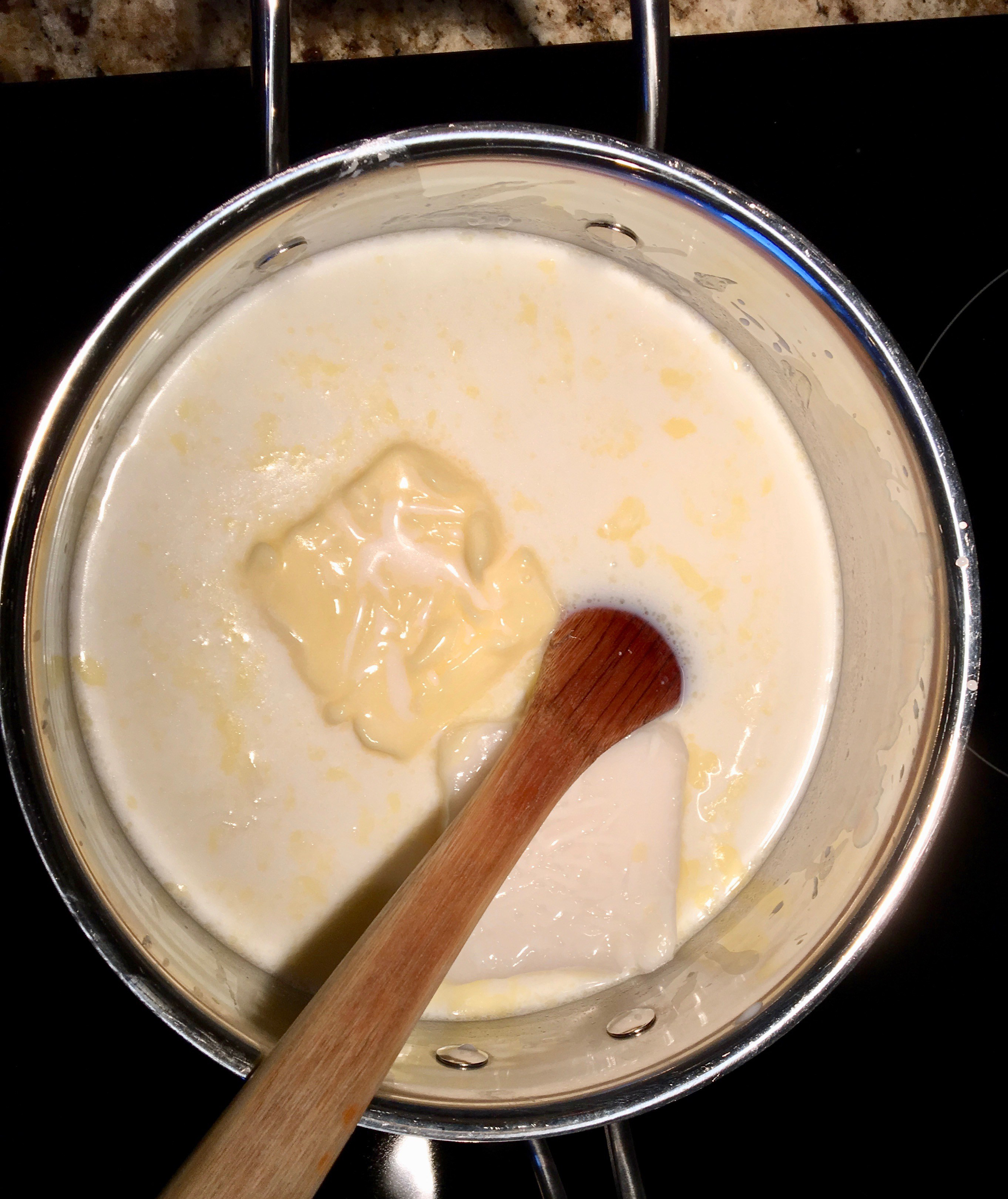
Ingredients
Method
- Preheat oven to 350ºF/175ºC. Dissolve 1 teaspoon of sugar in water, sprinkle yeast over top and let stand for 10 minutes. Combine bloomed yeast with milk and 5 cups flour. Beat well until smooth. Cover and let rise in warm place until light and bubbly (~5 minutes). Add eggs, sugar, 1/2 cup butter, and salt. Mix thoroughly. Stir in enough flour to make a dough that is neither too soft or too stiff. Let rise for 60 minutes. Turn on to a floured surface and knead for 5-10 minutes, mixing the raisins into the dough. Place back in bowl and let rise for 1 hour, until doubled in bulk. Divide and shape into loaves. Place in greased loaf pans, let rise for 1 hour until doubles in bulk. Bake 30-45 minutes until golden brown. Serve.
And now for the details…
This recipe is directly out of my grandma’s recipe box. Every year around Easter, she would make multiple loaves, and send several home with each of us. Easter weekend just doesn’t seem quite the same without toasted paska slices, smeared with lots of butter, served with some slices of old cheddar. Seriously, it makes me drool just thinking about it.
What is paska, you may ask? It’s a sweet bread, typical of many Eastern European countries, served on Easter Day, often after is has been blessed at church. Different folks will do different things with the paska dough. And this isn’t even different countries, but different families may have traditions that alter from family to family. Some will braid it or form it into ornaments, and some may add things like custards, sprinkled sugar, seeds, or raisins. For us? There was never any braiding, it was always simple loaves, and it was always with raisins.
Most paskas have their primary ingredients as milk, eggs, flour and butter. Because of the added fat in the dough from the milk, butter and egg yolks, the texture of the bread is fluffier and more “crumby” than a typical white bread, as the fats inhibit the formation of gluten chains. And with the addition of slightly more sugar than a typical bread dough, paska is fairly sweet, but not cake sweet. It is similar in flavour and texture to brioche or challah.
Let get to cooking. I was a bit worried about this batch… because of COVID, apparently lots of people are baking bread right now, and there was zero yeast left at all three stores I either visited or called. The only yeast I had in the house was stuffed at the back of the pantry and had an expiry date of 2016. Yikes. But… it’s all I had, so away we went.
Mix the 1 tsp of sugar into the lukewarm water and stir to dissolve. Sprinkle the yeast overtop, and let the yeast sit, to allow it to bloom, for about 10 minutes.
While you are waiting for the yeast, scald the milk and let it cool to lukewarm. What does scalding the milk mean? Place it in a pot and heat it up until it just starts to bubble and let off steam (it will get that “milk scum” formation on top). Why scald the milk? I have no idea. I’m venturing to guess that this is recipe that has been passed down a few hands/generations, and scalding the milk was needed because milk was not necessarily pasteurized when this recipe was first created… but… it’s the recipe, so I’m following it as taught by Grandma.
Once the milk has cooled to lukewarm, and the yeast has bloomed, add the milk and yeast mixture to 5 cups of flour. Mix thoroughly.

The dough at this point will be very soft and sticky. Let it rest in a warm place for about 5 minutes, until light and bubbly.
Next, add the beaten eggs, the rest of the sugar, 1/2 cup of melted butter, and salt. Mix thoroughly. The dough will be almost liquidy at this point, more like a batter than a dough.

To get it looking more like a dough, now is when we start to mix the rest of the flour in. Mix it in 1-2 cups at a time, fully mixing the flour into the dough between each additions. After the first few additions, the dough will become too thick to mix with the spoon, start kneading the flour in with your hands at this point. Stir in enough flour to make a dough that is neither too soft or too stiff. It should be a bit tacky, but doesn’t stick to your hands when you pull away.

Cover the dough with a tea towel and set it in a warm place to rise for an hour.
After the dough has risen, turn it out onto a floured surface, and knead the dough for 5-10 minutes until it is smooth and satiny (grandma’s word, seriously, it was on the recipe that I copied from her), and knead the raisins into the dough.

Place the dough back into the bowl, cover, and let it rise again for another hour or until the dough has doubled in bulk.

Divide the dough and shape it into loaves. Place the loaves into greased loaf pans, and let them rise another hour, until they have doubled again.

Preheat the oven to 350ºF/175ºC. Once the dough has risen in the pans, brush the tops with the remaining melted butter, and place them into the preheated oven for 30-45 minutes, or until the bread is golden brown.

Remove the loaves from the pans to allow them to cool. Or! Even better, cut into the bread while it’s still warm, slather with butter, and enjoy!

Happy eating.











